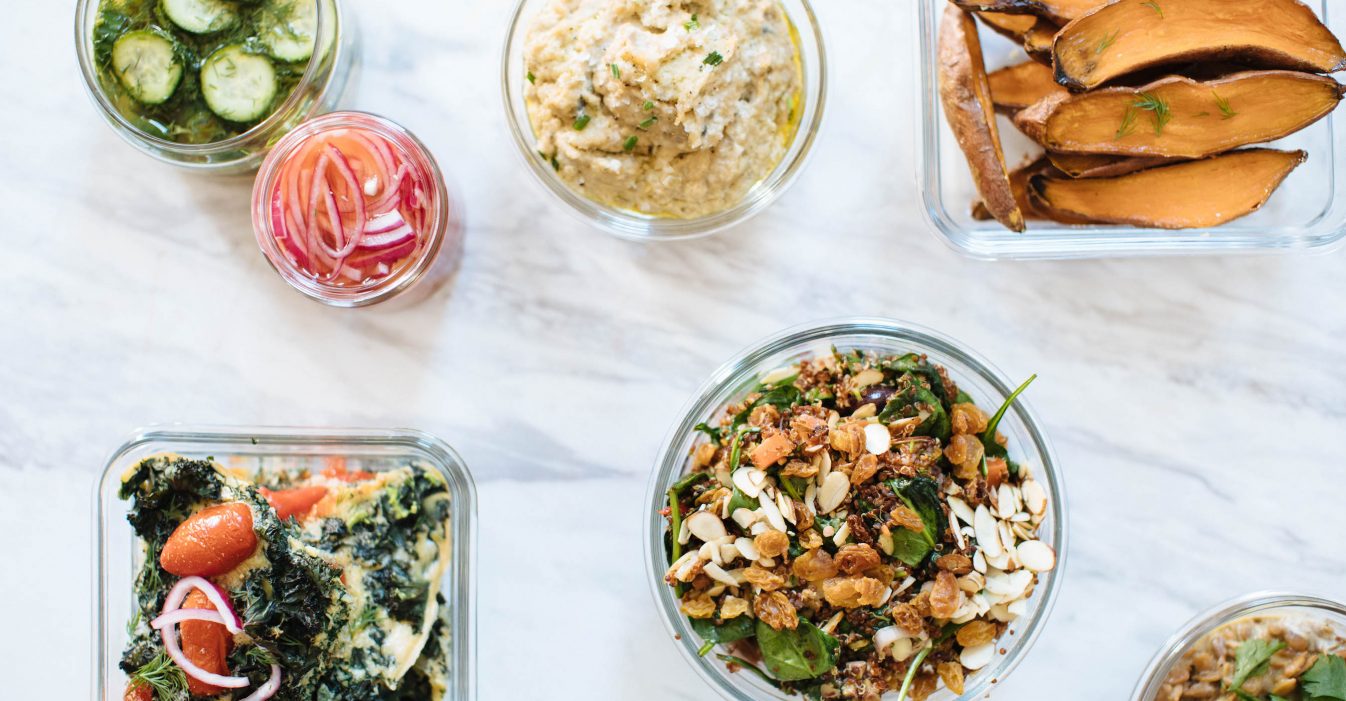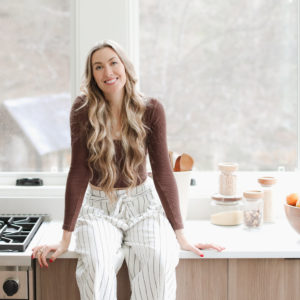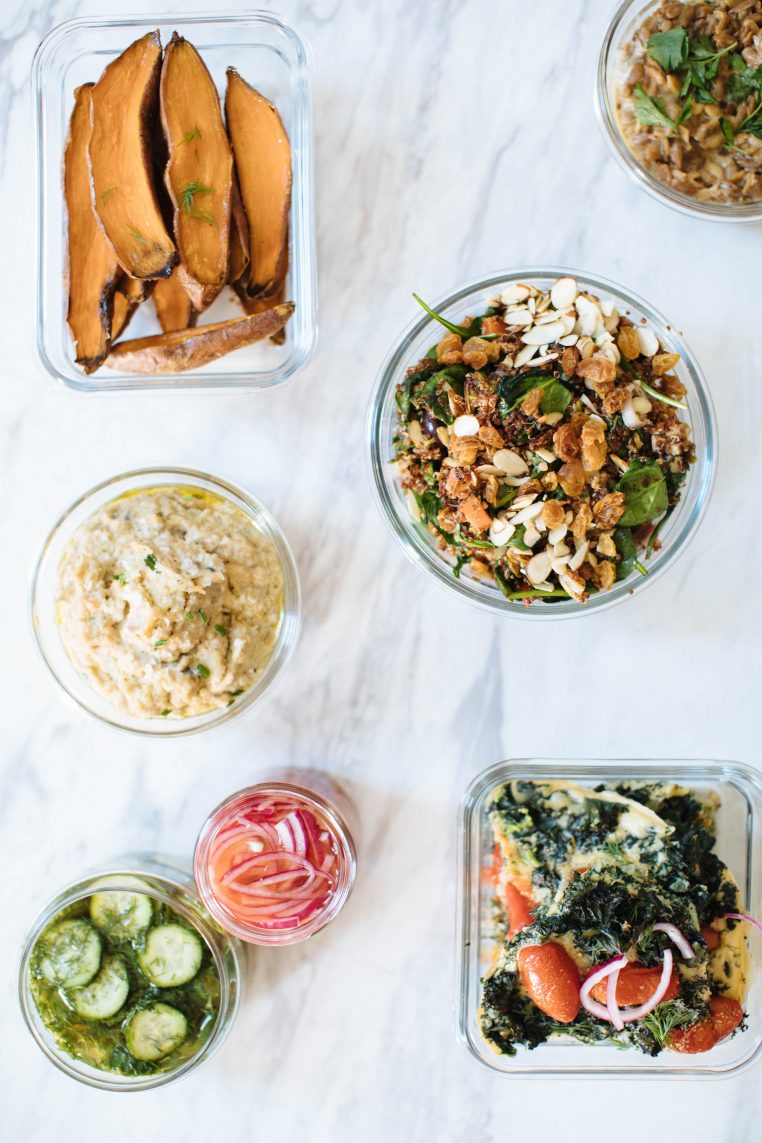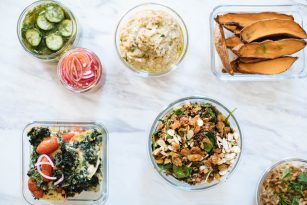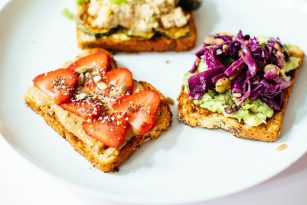If you meal plan and prep, then you should know about food safety! Here’s your meal planning food safety guide.
Did you know that one in six Americans may get sick from food poisoning per year? Not only can it cause hospitalizations, but it may impact long-term health from the more extreme cases causing kidney failure, nerve damage, arthritis, and in some cases death. (1)
Okay, okay, not to scare you with that statistic but it does teach you the importance of food safety at home. One of the most frequently asked questions I get with clients or with new members of our Master Meal Planning program community is about keeping food safe while doing meal prep.
Spoiler alert! Yes, you can meal plan while maintaining food integrity and most importantly the safety of your food from bacteria (food illness) and cross contamination just by following these basic food safety tips.
What Is Meal Planning?
We’ve covered this many times on nutritionstripped.com — in a nutshell, meal planning is a system (there are many ways to do it) where you prepare meals in advance for the week ahead. The motivation and goal behind meal planning are to help save you time, money, energy, and cook and eat healthfully.
I have great experience in this personally and professionally after developing one of the leading and first dietitian-approved and dietitian-created programs called the Master Meal Planning program years ago, and we’ve helped thousands make cooking and healthy eating simple!
What Is Food Safety?
The key steps for maintaining food safety is about four key principles from proper cleaning, storage, cooking or reheating, and chilling. Let’s dive in:
Clean
This goes without saying, but start any meal prep session with washing your hands with warm water, soap, for at least 30 seconds. Then move onto cleaning your fruits and vegetables — cleaning your fruits and vegetables should really take place prior to storing them in the fridge.
Be sure you keep your kitchen clean! It’s not just aesthetically pleasing and more functional, it’s safe. Be sure to clean all your work surfaces in the kitchen between steps of your meal prep, especially if you’re prepping vegetables one minute and moving onto animal proteins. It’s imperative you clean those surfaces and all utensils involved.
It’s also recommended that after a meal prep session, sanitize your kitchen working areas. That could be with a steam cleaner, DIY vinegar based solution with alcohol, or any disinfectant you choose that’s safe for countertops/eating areas.
Separate
Now you have an excuse to buy more cute, functional cutting boards and utensils! Ideally, you want to use separate cutting boards and utensils for different types of foods — a set for animal proteins like poultry and another for vegetables and fruits. This can be a huge line of defense for stopping cross-contamination.
When you’re grocery shopping, be sure to store your produce separately from animal proteins — it can be as simple as using a reusable bag (that you wash each time) to wrap the animal proteins in, using a basket inside of the cart to hold your animal proteins, etc.
Another huge tip is the organization of your fridge! Here’s how your fridge should look, it goes from the lowest cooking temperature needed to highest:
- Top shelf: pre-made items like condiments, leftovers, ready to eat, etc.
- Top-middle shelves: 135 degrees F vegetable and other produce
- Middle shelf: 145 degrees F seafood, eggs
- Middle-bottom shelves: 155 degrees F ground or marinated meats
- Bottom shelves: 165 degrees F poultry, previously cooked casseroles or cooked items (some meal prep things will go here too)
Follow the FIFO method
First in, first out. Using items that you first put in, should be either used first and/or thrown out first if not consumed. Throw away anything that smells off, that’s been in the fridge longer than the preferred storage time, if it’s been left out of the fridge for more than 2 hours, etc. When in doubt, just throw it out!
In addition to using this method, be sure you’re labeling your containers so you know what date you put them in the fridge or you can label than with the date they need to be consumed by — or thrown away by. Whatever date schedule works for you, just stick with it.
Cook
You know that random food thermometer in your kitchen drawer, yeah, it has a purpose! Most of us don’t cook with food thermometers, but it’s really important to make sure you’re cooking food properly and with enough time — especially if they’re animal proteins.
Keep hot food hot
Keep food hot after cooking it at 140 degrees F with a warming tray, a slow cooker, or a warming dish if you’re serving it at a party or for a couple of hours. Because bacteria thrive when food starts to cool, it’s important to keep it hot or properly cool the food before storing.
If you’re reheating a meal prepped food item or casserole, etc. just portion out the amount you want to consume, cook it, and enjoy.
Chill
An easy rule to follow is the rule of two’s. If the food is perishable, don’t let it sit out of the fridge or cold temperatures for more than 2 hours and also if the food is hot, make sure it’s refrigerated within that 2-hour window — that’s the cutoff point.
Always marinate or thaw foods in a food-safe container, never just on the countertop! Because bacteria thrive at room temperature, having food sit out on the countertop to thaw can be a breeding ground for bacteria. Always thaw in a food-safe container, in the fridge which takes some time, in the microwave, or under cold running water.
Keep cold food cold
Refrigerator temperature should be 41 degrees F or lower. Freezer temperature should be at or below 0 degrees F — just use a thermometer inside each unit to maintain.
Check out this helpful guide on storage duration of certain types of items, you’ll notice many of these are animal proteins or include animal proteins which have a shorter storage time than vegan or plant-based meals.

